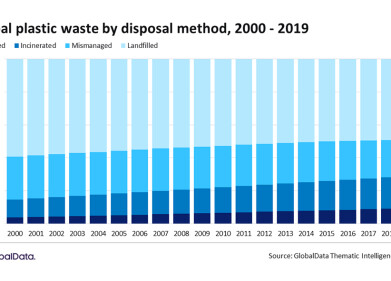Fuel for Thought
Is This the End for Oil and Gas Platforms?
Nov 03 2014
125 miles off Norway’s coast, a soccer pitch-sized structure has been plunged to the bottom of the ocean. It will contain a vast compressor believed to be the world’s largest compressor offshore. The compressor was designed to extract $30bn worth of gas from a depleted gas field. It represents a technological leap for the compressor’s designers, Statoil, as compressors have until this point been placed on a platform above the surface of the sea, rather than directly onto the sea bed.
Margareth Ovrum, who is overseeing the project, told a BBC representative at the construction site in Egersund, “We are very excited about this. This is a really major leap in technology. We are very proud of it and we are confident that it’s going to work.” Statoil say that a compressor placed on the sea bed will consume 30-50% less energy than a standard platform compressor, and will extract more gas for the same cost ($2bn). Statoil are hopeful that this will spell the end of oil and gas platforms altogether and that entire drilling operations will be placed onto the sea bed in future, allowing drilling in deeper water and even in Arctic regions.
Environmental concerns
Environmentalists have criticised state-owned Statoil for seeking more hydrocarbons, commenting that they should concentrate on saving carbons emissions. They have expressed outrage that Statoil is seeking more fossil fuels when experts have found that only a third of what has already been found can be burned safely. Truls Gulowsen from Greenpeace told the BBC, "Fossil fuel companies and governments are stuck in the mindset that they have to retrieve every last barrel. The (Norwegian) government should insist that it turns its technology investments to renewable energy systems and doesn’t keep pressing ahead with a strategy that will destroy the climate.”
Carbon capture technology
Although Statoil are also working on carbon capture and storage technology that might allow the burning of fossil fuels to continue, these projects attract far less interest than the sea bed compressor. Statoil leads a group of companies that is currently testing carbon capture equipment on two types of exhaust at the experimental Mongstat technology centre, near Stavanger in Norway, using ammonia and amine on exhaust from an oil refinery and a gas-fired power station.
Frank Ellingson, who is in charge at Mongstat, said that they need more companies to investment in different types of technology to lower costs. He said, ‘“We know we can capture 90% of the CO2 (from the exhausts) but it’s far too expensive. If governments really want this technology to work they will have to put policies in place to make it work.” However, carbon capture technology remains years behind schedule as there is little will to drive it into mainstream. Ellingson’s colleague explained that this is mainly due to the compressor project inspiring much more excitement than carbon capture technologies because of its potential to make billions of dollars.
If this is the end for oil and gas platforms, several problems arise regarding their disassembly or demolition. While scale and fortitude are positive qualities during an oil rig’s lifespan, this becomes a problem once an oil rig ceases to be useful. You can find out the possibilities in this article: What happens when an oil rig retires?
Digital Edition
PIN 25.2 Apr/May
May 2024
Safety - Carbon monoxide toxic and flammable gas detection Analytical Instrumentation - Density: A fundamental parameter at critical stages within the petroleum sector - Advancements and...
View all digital editions
Events
Jul 10 2024 Birmingham, UK
Thailand Oil & Gas Roadshow 2024
Jul 11 2024 Rayong, Thailand
Jul 20 2024 Denver, CO, USA
Jul 21 2024 Cape Town, South Africa
Jul 24 2024 Bogata, Colombia


















